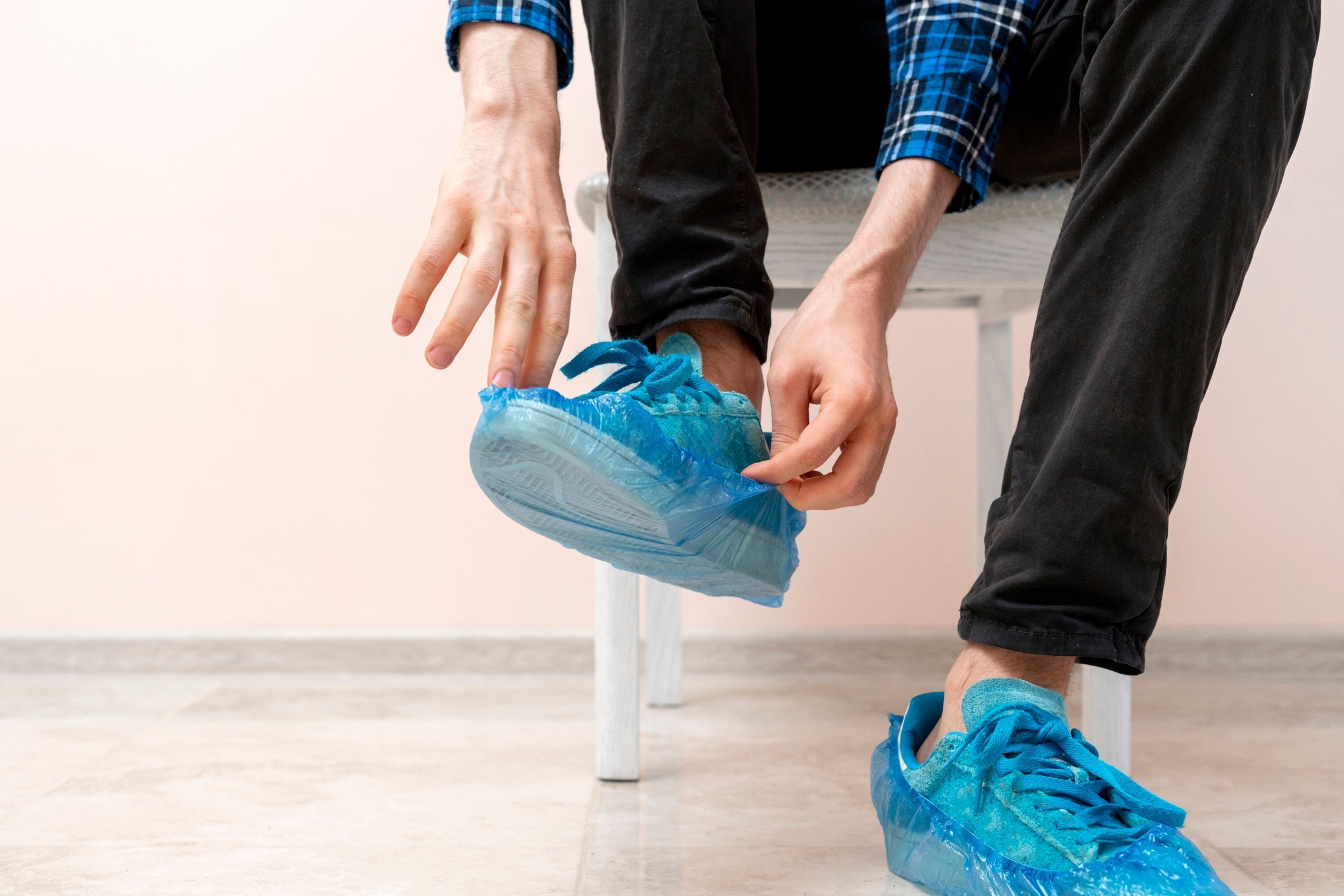In environments where hygiene, cleanliness, and contamination control are paramount, disposable shoe covers serve as an essential component of personal protective equipment (PPE). These lightweight, single-use coverings are designed to be worn over regular footwear, providing a barrier against dirt, debris, and pathogens. This guide delves into the various aspects of disposable shoe covers, including their types, benefits, applications, and best practices for use.
Understanding Disposable Shoe Covers
Disposable shoe covers, often referred to as booties or overshoes, are protective coverings made from materials like non-woven polypropylene, polyethylene (PE), or chlorinated polyethylene (CPE). They are designed to fit snugly over shoes, offering protection against contaminants and preventing the spread of dirt and microbes.
Common Materials
- Non-Woven Polypropylene (PP): Lightweight and breathable, suitable for general-purpose use in healthcare, cleanrooms, and laboratories.
- Polyethylene (PE): Water-resistant and durable, ideal for environments with moisture exposure, such as food processing and cleaning services.
- Chlorinated Polyethylene (CPE): Offers enhanced durability and slip resistance, making it suitable for wet or slippery surfaces in chemical industries and laboratories.
- SMS (Spunbond-Meltblown-Spunbond): A multi-layered material combining spunbond and meltblown fabrics for enhanced filtration and strength, used in medical and industrial applications.
- Tyvek®: A brand of flash-spun high-density polyethylene fibers known for its durability and protective qualities, commonly used in cleanrooms and hazardous material handling.
Design Features
- Elastic Openings: Ensure a secure fit around the ankle, preventing the cover from slipping off during use.
- Non-Slip Soles: Some models feature textured soles to reduce the risk of slipping on smooth or wet surfaces.
- One-Size-Fits-Most: Designed to accommodate a wide range of shoe sizes, simplifying inventory management.
Benefits of Using Disposable Shoe Covers
1. Contamination Control
In healthcare settings, laboratories, and cleanrooms, maintaining a sterile environment is critical. Disposable shoe covers prevent the transfer of contaminants from footwear to sensitive areas, reducing the risk of infection and ensuring compliance with hygiene standards.
2. Floor Protection
In residential and commercial settings, especially during construction or maintenance work, shoe covers protect flooring from dirt, scuffs, and potential damage, preserving the cleanliness and integrity of the surface.
3. Time and Cost Efficiency
Using disposable shoe covers eliminates the need for regular cleaning of floors and footwear, saving time and reducing maintenance costs. Their single-use nature also ensures quick and easy disposal after use.
4. Enhanced Professionalism
For service providers entering clients' homes or offices, wearing shoe covers demonstrates respect for the client's property and attention to cleanliness, enhancing the company's professional image.
5. Safety Enhancement
Non-slip disposable shoe covers have added traction on the bottom to prevent slips and falls on wet or slippery surfaces, enhancing safety in various work environments.
Applications Across Industries
Healthcare
Hospitals, clinics, and laboratories utilize disposable shoe covers to maintain sterile environments and prevent cross-contamination between different areas.
Food Processing
In food manufacturing and preparation areas, shoe covers help prevent the introduction of contaminants, ensuring food safety and compliance with health regulations.
Construction and Renovation
Contractors and workers use shoe covers to protect clients' flooring from dirt and debris during construction, remodeling, or maintenance projects.
Cleanrooms
Industries like pharmaceuticals and electronics manufacturing require ultra-clean environments; shoe covers are part of the standard PPE to prevent particulate contamination.
Residential Services
Service providers such as plumbers, electricians, and pest control professionals wear shoe covers when entering homes to maintain cleanliness and show respect for the client's space.
Best Practices for Use
Proper Application
- Preparation: Ensure hands are clean or wear gloves before handling shoe covers.
- Donning: Sit down and place one foot into the shoe cover, pulling it up over the heel. Repeat with the other foot.
- Adjustment: Ensure the elastic opening is secure around the ankle to prevent slipping.
Safe Removal
- Removal: Grasp the top of the shoe cover near the ankle and pull it off, turning it inside out to contain contaminants.
- Disposal: Place used covers in designated waste containers to prevent cross-contamination.
Usage Guidelines
- Single Use: Disposable shoe covers are designed for one-time use and should not be reused.
- Inspection: Check for tears or defects before use to ensure effectiveness.
- Storage: Store in a clean, dry area away from direct sunlight to maintain material integrity.
Selecting the Right Shoe Covers
When choosing disposable shoe covers, consider the following factors:
- Material: Select based on the environment—non-woven for general use, PE or CPE for moisture-prone areas.
- Size: Ensure the covers fit the range of shoe sizes used by personnel.
- Slip Resistance: For environments with smooth or wet floors, opt for covers with non-slip soles.
- Durability: In high-traffic or demanding environments, choose thicker materials for enhanced durability.
Conclusion
Disposable shoe covers are a vital component in maintaining cleanliness, preventing contamination, and protecting flooring across various industries. By understanding their features, benefits, and proper usage, organizations can ensure a hygienic environment, safeguard their facilities, and project a professional image.

